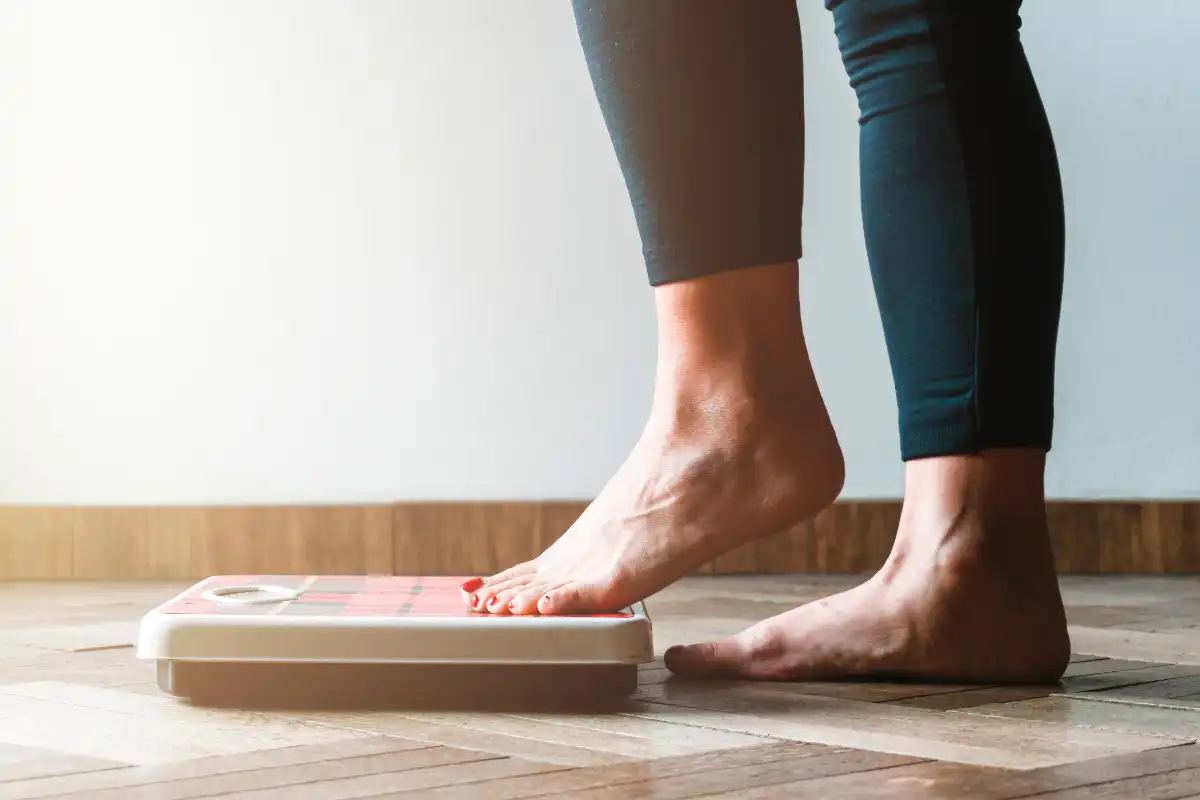
While frustrating, weight loss plateaus are a normal part of the process, and understanding how to navigate them is key to achieving your goals. This blog post will delve into practical strategies for overcoming weight loss plateaus that will get you back on track. We'll discuss ways of breaking through diet stalls with practical, effective weight loss tactics.
Understanding Weight Loss Plateaus
At WAG, we consider a weight loss plateau to be four or more weeks with no progress toward a weight loss goal. As coaches, we are patient when adjusting a nutrition plan to ensure we see a true plateau. Sometimes, weight may stall for a week or two and then begin trending down again, so waiting four weeks before making changes is essential.
This is also why managing your own nutrition and weight loss can be trickier—getting impatient and jumping the gun is common.
What Causes Weight Loss Plateaus?
Weight loss plateaus can happen for a variety of reasons. Let’s break down some of the most common reasons you may see a stall in your weight loss.
Advertisement
- Changes in your diet: Although nuanced, a general assumption is that when you lose weight, your body requires fewer calories to function optimally. If calories have stayed the same as your weight has decreased, you may need to reduce calories to continue seeing weight loss.
- Increased stress: Mostly due to its impact on water retention and triggering unhealthy eating habits and shifts in routine, stress is one of the biggest culprits we see at WAG regarding weight loss plateaus.
- Changes in your exercise routine: If your exercise routine has changed—specifically, if you’re exercising less—you may be burning fewer calories through exercise. If calorie intake has stayed the same as calorie output decreased, this could stall progress.
- Changes in daily movement: NEAT (non-exercise activity thermogenesis) is all of your daily activity outside of organized exercise. If you start moving more (or less) throughout the day, this impacts overall calorie burn.
- Changes in your hormones: Hormones affect everything from appetite to where and how your body stores fat. Changes in hormones (especially unhealthy changes) can cause weight gain that negates fat-loss efforts and stalls the scale.
- Water retention: Many things cause water retention. Stress, sleep, salt intake, food sensitivities, hydration status, and medication use to name a few. Although this isn’t true weight gain, these things can cause frustrating scale fluctuations.
- Medications/illness: Although more temporary, some medications and illnesses can shift water retention and fat storage.
Your body’s metabolism also shifts when dieting, one of the most common reasons we see weight loss plateaus with our clients. Let’s dig into it further.
The Body's Natural Adaptation
We see two main things regarding the body’s natural adaptations during dieting that may impact or cause frustration when looking for consistent weight loss progress.
You need fewer calories as you lose weight
As you lose weight, your body mass decreases, and your body requires fewer calories to maintain its new, smaller size. The same number of calories that initially created a deficit and led to weight loss may no longer be sufficient to continue seeing results.
But why? Your basal metabolic rate (BMR), the number of calories your body burns at rest, decreases as you lose weight. To maintain a calorie deficit and continue losing weight, you (or a coach) need to recalculate your calorie needs based on your new weight and reduce your intake accordingly.
Set Point Theory
The Set Point Theory suggests that your body has a preferred weight range and actively works to maintain that weight. When you try to lose weight, your body may resist by slowing your metabolism, increasing hunger, and decreasing energy expenditure. This makes it more challenging to lose weight since your body is working to maintain the weight you had. It is possible to “reset” your set point by consistently maintaining a healthy weight and lifestyle.
Advertisement
Are You In a Real Weight Loss Plateau?
This goes beyond waiting the full four weeks; You need to ensure that you’re:
- Measuring weight loss correctly
- Taking body composition change into account
- Actually following your nutrition program
- Consider changes in lifestyle or routine
Measure Weight Loss Correctly
Many things impact the number you see on the scale—sleep quality, meal timing, stress, hydration status, workouts and recovery, and more. To mitigate these variables as much as possible, weigh yourself every morning to the nearest tenth before eating or drinking anything with minimal (and consistent) clothing.
From there, average your daily weights each week and compare your weekly averages. Here’s an example:
Week One Weights:
Advertisement
- Monday: 146.2
- Tuesday: 147.0
- Wednesday: 146.5
- Thursday: 146.6
- Friday: 145.8
- Saturday: 147.1
- Sunday: 145.2
- Week One Average Weight: 146.3lbs
Week Two Weights:
- Monday: 145.5
- Tuesday: 147.1
- Wednesday: 145.4
- Thursday: 146.2
- Friday: 145.7
- Saturday: 146.1
- Sunday: 145.0
- Week One Average Weight: 145.8lbs
Change in average weight: 0.5lbs
If you only consider single weekly points (ex, Tuesdays), it would look like there was no change in your weight, and you may make unnecessary (and ultimately damaging) changes to your program.
An average change of 0.5 lbs is right on track for where we’d like to see it at WAG—it is fast enough that we know the plan is working but not so fast that we’re worried about adverse dieting effects.
If there was no or very little (~0.1-0.2lbs) average weekly change for four or more weeks, that is when you may need to consider making changes to your program to break through your plateau.
Advertisement
Consider Body Composition Change
You’ve likely heard someone say, “Muscle weighs more than fat,” which is true. Your body composition (the fat-to-muscle mass ratio) may change even if your weight doesn’t. If this is the case, it means you’re likely losing fat and gaining muscle simultaneously, and this isn’t considered a weight loss plateau.
We cover some ways to measure body fat percentage here, but the easiest and most accessible way to assess changes in body composition is to take weekly pictures and measurements. Much like taking your weight, this should be done early in the morning before eating or drinking anything.
Learn more body measurement best practices here.
H3: Are You Actually Following Your Nutrition Program?
It is common to confuse having a nutrition program with following a nutrition program. You wouldn’t buy a workout program, sit on the couch, and expect to get fitter. So, why would you buy or create a nutrition program and expect it to work if you’re not following it consistently?
At WAG, we consider optimal consistency, ending each day within five grams of your protein and carb targets and within two grams of your fat target.
Advertisement

If you regularly fall outside of these ranges, eat out at restaurants frequently, or allocate many calories to alcohol, it may not be a true weight plateau—you could be eating above calorie levels that would otherwise encourage weight loss. We recommend dialing in consistency before changing your macros. If you need help with accountability, that is what we do best.
Assess External Factors Honestly
Outside of macro consistency, take the changes in weight loss caused by the changes discussed above into consideration. If any of the above applies to you and your current lifestyle, you may not need to adjust calories just yet. You likely need to get at the root cause of other issues to get weight loss moving again.
Strategies for Overcoming a Weight Loss Plateau
If you’re sure you’re in a real weight loss plateau, here are a few things to try.
Advertisement
Re-Calculate Your Calorie Intake
When you lose weight, your calorie needs change. So macros that once put you in a deficit may slowly (but surely) become maintenance calories or, in extreme cases, put you in a calorie surplus. Re-calculating calories and macros based on your current body weight is a great first strategy to overcome a weight loss plateau. Use our free macro calculator here, or work with an experienced coach who can continuously monitor your progress, ensure you need to adjust your macros, and make those changes for you!
Incorporate Strength Training
If you haven’t already, incorporating strength training into your routine can help you break through a weight loss plateau by supporting (and building) lean muscle. More lean muscle increases your metabolism and helps you burn more calories throughout the day.
Already strength training regularly? Switch up a session and add a little more cardio. Trying a different workout type may spark progress again.
Increase NEAT (Non-Exercise Activity Thermogenesis)
Remember NEAT? All the movement throughout the day outside of organized exercise?
Increasing the calories you burn by walking up stairs (vs. taking the elevator), parking farther away from the grocery store doors, standing at work, or going through a mid-day walk can increase overall calorie burn throughout the day.
Advertisement
Make Sleep a Top Priority
Prioritizing sleep and recovery is essential for regulating hormones, reducing stress, and supporting overall health. Aim for at least seven to eight hours of quality sleep per night. (And grab these tips if you need a little help).
The Importance of Patience and Consistency
Weight loss plateaus can be incredibly frustrating, but it's essential to remember that weight loss is a journey, not a sprint, and requires patience and consistency. Don't get discouraged if you hit a plateau and the number on the scale stops moving for a while. It's a normal part of the process, and it is the people who stick with their plan even during times of frustration that see progress again most quickly.
Avoiding Frustration and Diet Sabotage
The feeling of being stuck during a plateau can lead to frustration, which may prompt you to take drastic measures or abandon your weight loss efforts altogether. This is where patience becomes crucial. Avoid the temptation to drastically cut your calories or engage in excessive exercise, as these actions can backfire and lead to nutrient deficiencies, muscle loss, excess hunger, stress, poor sleep quality, and a general rebound effect. Instead, focus on making small, sustainable adjustments to your diet and exercise routine, and remember that progress takes time. Also, don't compare yourself to others.
Remembering the Long-Term Goal:
When facing a plateau, it's easy to lose sight of the big picture and fixate on the immediate lack of progress. Take a step back and remind yourself of your long-term goals and the reasons why you embarked on this weight loss journey in the first place. Are you striving to improve your health, boost your energy levels, fit into your favorite clothes, or simply feel better about yourself? Keeping your long-term goals in mind can help you stay motivated and committed to your weight loss plan, even when the going gets tough. It helps keep you focused on the big picture.
Advertisement
Final Thoughts on Overcoming a Weight Loss Plateau
Overcoming weight loss plateaus requires patience, persistence, and a willingness to make knowledgeable adjustments to your diet and exercise routine only when necessary. By understanding why plateaus happen and implementing the strategies discussed today, you can break through diet stalls and continue seeing progress toward your weight loss goals. Remember that consistency is key to implementing effective weight loss tactics and that small changes can add up to big results over time.
Navigating these challenges can be tough on your own. If you're tired of feeling stuck and are ready to get personalized guidance and support to break through your weight loss plateau, try WAG 1-on-1 nutrition coaching. You and your coach will develop a customized strategy that addresses your unique needs, optimizes your nutrition, and helps you achieve sustainable results.
Schedule a Free Intro Call
Working Against Gravity has led the macro tracking and health space for over a decade. Our team doesn’t just understand the science of nutrition—we’ve spent years mastering the art of tailoring it to fit your life. That means no cookie-cutter plans, just real strategies that have worked for over 30,000 people.
Schedule a free call with our team to learn how working with a 1-on-1 WAG coach will help you reach your goals.



